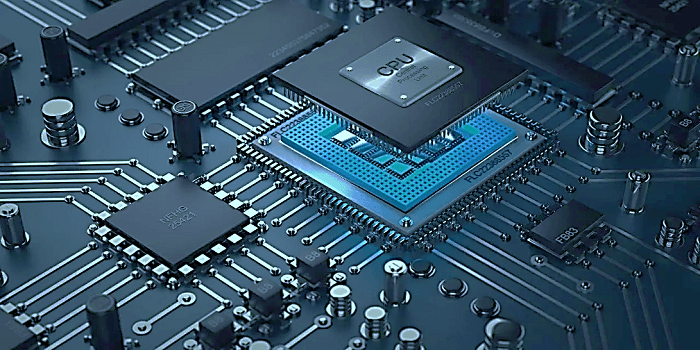
Embedded systems are becoming increasingly ubiquitous in our everyday lives, from the computer chips that power our smartphones and tablets to the microcontrollers that control the operation of our cars and other vehicles.
The reliability of these systems is critical, as they are often responsible for performing safety-critical tasks. This blog post will discuss tips, techniques, and best practices for creating reliable embedded systems.
Tips for Designing Reliable Embedded Systems
The design phase of an embedded system is crucial for ensuring reliability. Here are several tips and techniques to take into consideration during the design phase:
Specify Requirements
One of the critical steps in designing a reliable embedded system is clearly defining the requirements. The requirements should include all necessary functionality, performance goals, and constraints, such as memory and processing limitations.
System Architecture Design
The system architecture should be designed to meet the requirements while ensuring reliability. The architecture should be modular, and components should be decoupled to allow for easier testing and maintenance. The architecture should also be designed to minimise the impact of component failure.
Hardware Design
The hardware design should be optimised for reliability. This includes selecting components that are rated for the required operating conditions, as well as designing for noise immunity and thermal management. Additionally, fault-tolerant design techniques such as redundancy and error detection should be considered.
Software Design
The software design should be developed with reliability in mind. This involves adhering to coding best practices, which encompasses writing code that is easy to read, concise, and maintainable Also, using appropriate software development methodologies like agile development or DevOps can help ensure the system’s reliability.
Best Practices of Embedded Systems
Implementing best practices is crucial to ensure the reliability of embedded systems. Here are some recommended best rules to adhere to:
- Code Quality: Developing high-quality code is critical for the reliability of embedded systems. Code should be well-structured, readable, and maintainableFurthermore, it is crucial to thoroughly review and test the code to detect and resolve any potential bugs or issues.
- Testing and Validation: Testing and validation are essential to ensure the embedded system meets its requirements and performs reliably. Test cases should be designed to cover all possible scenarios and conditions. Validation testing is also essential to verify that the system satisfies the necessary performance criteria. Learn more about how to implement and streamline embedded security testing so that you create safe and secure systems.
- Safety and Security: Embedded systems must prioritise safety and security. The design, development and testing phases should incorporate safety considerations, while security measures such as encryption and access control should be implemented to safeguard against potential malicious attacks.
- Maintenance and Upgrades: Maintenance and upgrades are necessary to keep the embedded system operating reliably over time. Regular maintenance should be performed to identify and address potential issues, while upgrades should be implemented to keep the system up-to-date with new technologies and features.
Methods to Enhance Reliability in Embedded Systems
There are various techniques available to enhance the reliability of embedded systems;
Fault Detection and Correction: Fault detection and correction are essential techniques for ensuring the reliability of embedded systems. This involves detecting and addressing faults or errors before they can cause significant issues.
Redundancy: Redundancy is an effective technique for improving the reliability of embedded systems. This involves adding duplicate components or subsystems to the system to provide backup in case of a failure.
Watchdog Timers: Watchdog timers monitor the system’s operation and reset the system if it stops responding or behaves unexpectedly. This ensures the system stays within its specified operating parameters and avoids catastrophic failures.
Error Handling: Error handling is an essential technique for ensuring the reliability of embedded systems. This entails detecting and managing errors or exceptions arising while the system operates. Implementing proper error-handling mechanisms can prevent system crashes or incorrect results.
Choosing the Right Components
Selecting the appropriate components is crucial for ensuring the dependability of embedded systems. Below are some of the key considerations to keep in mind when choosing components:
- Processors: Processors are the heart of an embedded system, and choosing the right processor is crucial for ensuring reliability. Factors to consider include the processor’s performance, power consumption, and reliability.
- Memory: Selecting the appropriate memory is also essential in embedded systems. Ensuring the system runs smoothly and reliably while maintaining optimal performance is crucial.
- Communication Interfaces: Communication interfaces facilitate connecting an embedded system and other devices or systems. Selecting the appropriate communication interfaces is vital to ensure the system can communicate effectively, securely, and without interruptions.
- Power Supply: The power supply is critical for adequately operating an embedded system. Picking the appropriate power supply is crucial for the reliable and efficient operation of the system.
Conclusion
Creating reliable embedded systems ensures they perform their intended functions safely and efficiently. Remember to consider the design phase, implement best practices, use effective techniques, choose the right components, and address the challenges of creating reliable embedded systems. By doing so, you can ensure that your embedded system perform








